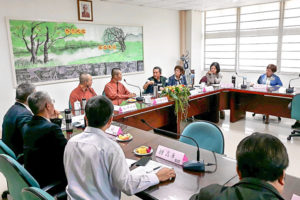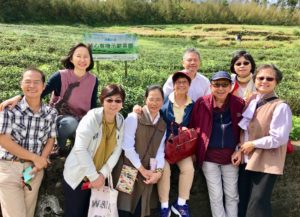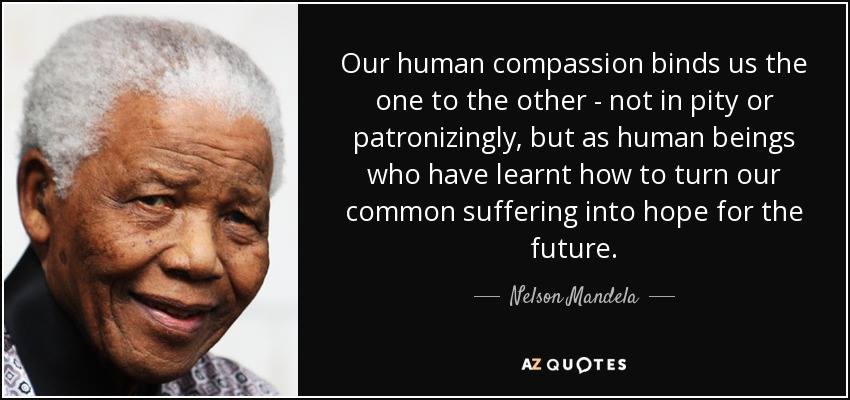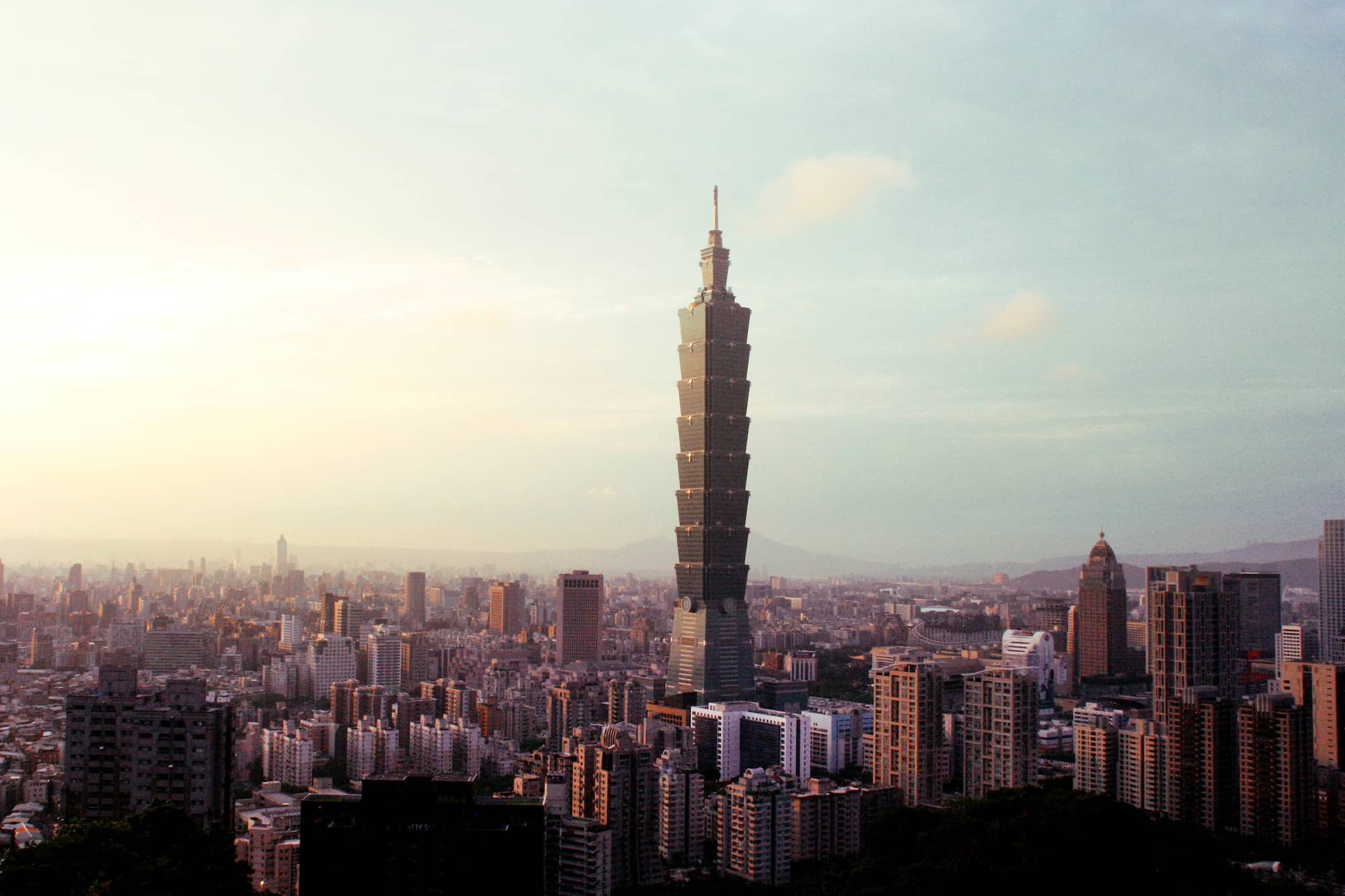President’s Report for the Positive Living Newsletter (November 2017). Read the rest of the newsletter here.
This is my fourth and the longest lecture tour in Taiwan. After four weeks of immersion in her culture and close interactions with her people, I have discovered so many wonderful things about this beautiful island, and I want to share my findings with INPM members.
A Model Country of Peace and Prosperity
Everywhere I went, I was greeted by the warmest and friendliest people I have ever met. Everywhere I went, I witnessed a hard-working, peace-loving people doing their best in a hostile world, where they are isolated, squeezed politically and economically, and threatened militarily by a much stronger neighbour.
The miracle of Taiwan is that, in spite of all their hardships, they remain a model country of peace and prosperity, with a high human development index and DGP, because of their commitment to developing the human capital and a technology-oriented economy.
Furthermore, one can witness a general awareness and systematic practice of recycling in Taipei as well as in small townships. Their efforts to protect the environment are not dictated by the government, but compelled by a higher motivation of caring for planet earth. There is a large dedicated group of volunteers in recycling and other practices of environment protection. That is why Taiwan has become a world leader in greening.
They do not have much in terms of their population and natural resources, but they are able to make the most of what they do have. Taiwan is certainly a very friendly, peaceful, and safe place to live, with lush green mountains, clean blue waters, and orderly urban centers. If more countries model after Taiwan, we would have a kinder and gentler world.
Taiwan’s political transformation and economic success are primarily due to its robust constitutional democracy. However, I think life education and religion also play an important role in Taiwan’s resilience and revival.
Life Education as a Core Curriculum
Taiwan is the first country where life education is officially incorporated into the curriculum at all levels of the public school system. I had the privilege of speaking at the International Conference of Life Education at the National Taipei University of Nursing and Health Science. I also had the privilege of providing consultation to Wenzao Ursuline University of Languages regarding their international project on life education.
I have always considered Taiwan’s life education as a meaning-centered approach to positive education or PE 2.0, the topic of my address at both the National Kaohsiung Normal University and Fo Guang University. While agreeing with the broad mission of positive education to “equip young people with the knowledge and life skills to flourish and contribute to the flourishing of others,” life education is distinct in its approach and practice.
Life education or PE 2.0 begins with the orientation of cultivating the noble spiritual nature of the love of life and compassion for all living things inherent in every human being; thus, the general goodness of being a decent human being is emphasized more than individual signature character strengths. It also emphasizes the need for moral courage and life intelligence to embrace and transform the inevitable dark side of human existence through meaning and spirituality. Happiness is considered a by-product of such other-oriented pursuits, rather than an end value.
This dual-emphasis is cultivated both as core values and new habits in every aspect of daily living and social interactions. Life education is teleological, holistic, and collectivistic in its orientation. In the Asian culture, life education or PE 2.0 has contributed to character development, individual wellbeing, as well as building a good society. It remains an empirical question whether life education is a more effective approach than the positive education programs in the West.
One of the main gains in this lecture tour was to witness the initial planning meeting to start a Chinese Meaning-Centered Education and Counselling network as a sister organization of the INPM. This organization will be led by Harriet Wu, Suemay Chang, and Chiyun Lin, all lifetime members of INPM; they will also start a new Division on Life Education within the INPM.
A Compassionate Culture
A robust constitutional democracy provides the necessary political climate for individuals with vision and competence to freely pursue their dreams and contribute to society. The Bliss and Wisdom experiment is perhaps the best example. About 20 years ago, the late Venerable Master Ri Chang created the Bliss and Wisdom Organization to better the world through teaching Dharma, creating a compassion-based school, experimenting with organic farming, and pursuing various kinds of compassionate entrepreneurships.
Facing harsh conditions and formidable obstacles, he never gave up in his pursuits. Calling himself “the constantly defeated general,” he managed to get back on his feet each time and continued to pursue his ideal of benefiting all living beings.

Bliss and Wisdom Organization
Now, under the leadership of Spiritual Teacher ZhenRu, the Bliss and Wisdom Organization is the undisputed leader in Taiwan of organic agriculture, environmental protection, and compassionate services from its millions of members of the Sangha community.
I am pleased to have the privilege of sharing my vision of global wellbeing through PP 2.0 with the leaders of the Bliss and Wisdom Foundation. The second wave of positive psychology or PP 2.0 posits that the best way to live a fulfilling life is through (1) accepting and transcending suffering, and (2) living a life of meaning and compassion in serving others.
Global Wellbeing and Mature Happiness
More specifically, I introduced a new model of global wellbeing and flourishing in spite of suffering. This model consists of six components: Courage, Acceptance, Self-Transcendence, Meaning, Appreciation, and Compassion (CasMac). This model complements Seligman’s (2011) PERMA model. I predicted that CasMac is more relevant to the suffering masses, while PERMA is more relevant to people living in peace and prosperity.
Finally, I introduced a new construct of happiness or well-being—noetic or mature happiness—to complement hedonic and eudaimonic well-being, which are dominant in Western psychology. In contrast, mature happiness is characterised by inner harmony, acceptance, gratitude, contentment, and having peace with oneself, others, and the world. Such happiness results from self-cultivation in spiritual and psychological maturity and overcoming suffering and adversities. I pointed out that we all want happiness and avoid suffering, but, ultimately, we can discover mature happiness only through accepting and transforming suffering.
It is gratifying that the leading monks at the meeting validated my presentation on PP 2.0. Jack Huang, author of the above linked article and Director of the Higher Education Staffs in Bliss and Wisdom summarizes it well when he said to me with a smile: “We have actually been practicing PP 2.0, because all our activities are motivated by compassion for all living things and the meaningful purpose of serving others.”

With happy volunteers from the Bliss and Wisdom Foundation at their organic tea plantation. Jack Huang is the gentleman in the white shirt at the back.
In a sense, the 20-year experiment of the Bliss and Wisdom Organization can be viewed as a large field research on the validity of PP 2.0. Such research seems to have more external validity than laboratory research.
Personally, in visiting their school, organic farms, and tea-processing factory over my month-long stay in Taiwan, I have discovered that their volunteers are among the kindest and happiest people I have ever met. This reminds me of the findings that the happiest person in the world is a Buddhist monk and the happiest people are the Buddhist Bhutan. I now invite my positive psychology friends to study these Buddhist volunteers in Taiwan and discover their secrets of mature happiness.
Conclusion
After saying goodbye to Taiwan, I promised them that I would be back again to support their efforts in advancing compassion-based life education, global wellbeing, and mature happiness. The following quote from Nelson Mandela provide a fitting conclusion that our hope for a better future is through compassion that can transform suffering into tragic optimism and global harmony.

Cite
Wong, P. T. P. (2017). Why I love Taiwan. Dr. Paul T. P. Wong. Retrieved from http://www.drpaulwong.com/inpm-presidents-report-november-2017

 Meaning Conference 2025 will be the INPM’s first in-person conference with a virtual option after the pandemic.
Meaning Conference 2025 will be the INPM’s first in-person conference with a virtual option after the pandemic.